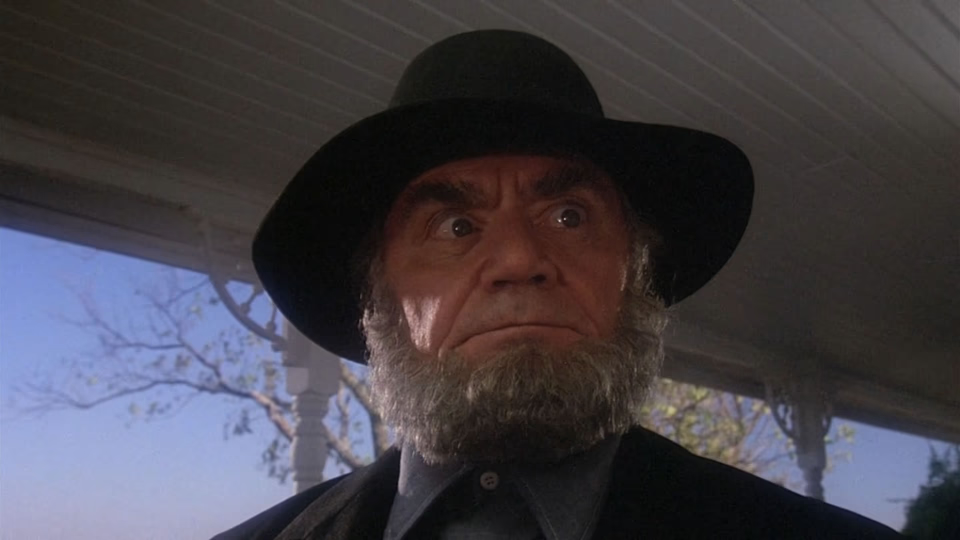Deadly Blessing

Wes Craven made a deal with the devil. After his gritty indie shockers The Last House on the Left and The Hills Have Eyes, he wanted studio money and studio distribution. What he got was studio interference and a movie that betrays everything that made him dangerous.
Deadly Blessing opens with a tractor accident that isn’t an accident. The victim? A former member of the neighboring Hittites, an ultra-fundamentalist sect that “makes the Amish look like swingers.” Ernest Borgnine leads this Bible-thumping clan with the kind of fire-and-brimstone fury that should be terrifying but feels borrowed from better movies.
The dead man’s widow invites college friends to stay. One is Sharon Stone in her first major role. Studio suits Peter Gruber and Jon Peters forced her casting, and it shows. Stone wanders through scenes like she’s auditioning for the role rather than playing it. She needed a director’s guidance. Craven, by all accounts a master technician, preferred to cast to type rather than coach performances.1 The result cripples the film.
A black-gloved killer starts picking off victims. Craven plays these scenes for suspense instead of gore, which might have worked if the suspense actually existed. An extended barn sequence with Stone struggles to maintain tension. A scene with an exhumed corpse and chickens shows flashes of dark humor. The best sequence—a bathtub encounter with a snake—Craven would recycle more effectively in A Nightmare on Elm Street.
The film can’t decide what it wants to be. The rural setting and mysterious Hittites scream folk horror. James Horner’s chanting score evokes The Omen. A spider motif weaves through nightmares and barn rafters. All prove red herrings leading to a Dressed to Kill knockoff that astute viewers will have seen coming.
Then comes the coda. A Carrie-like tag filmed at the studio’s request that’s so laughably inane it undoes what little credibility the film had left.2
Craven treated this as a work-for-hire project and it shows.3 He spent weekends location scouting for Swamp Thing instead of fixing Deadly Blessing. His lack of investment exposes his weaknesses: he needs control to be effective. The result is a curiosity for Craven completists only—proof that deals with the devil never work out in your favor.